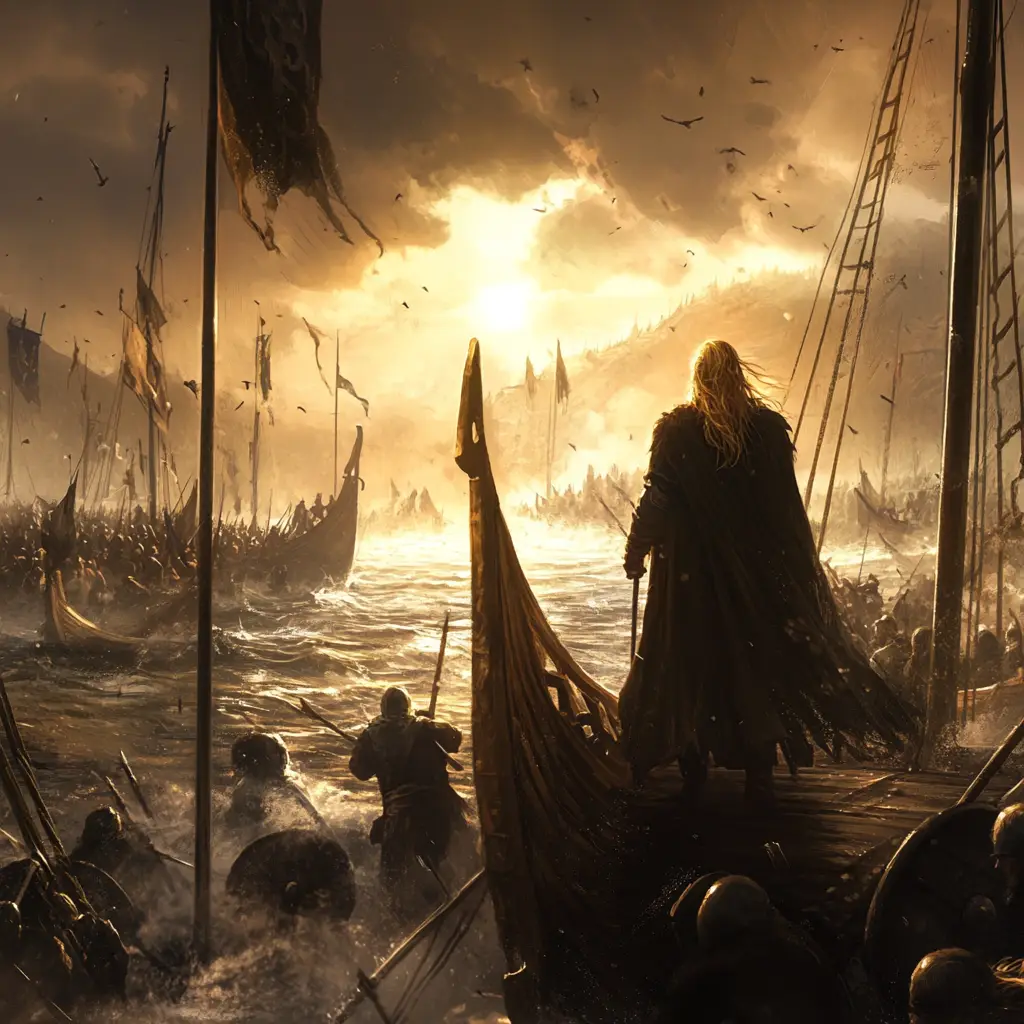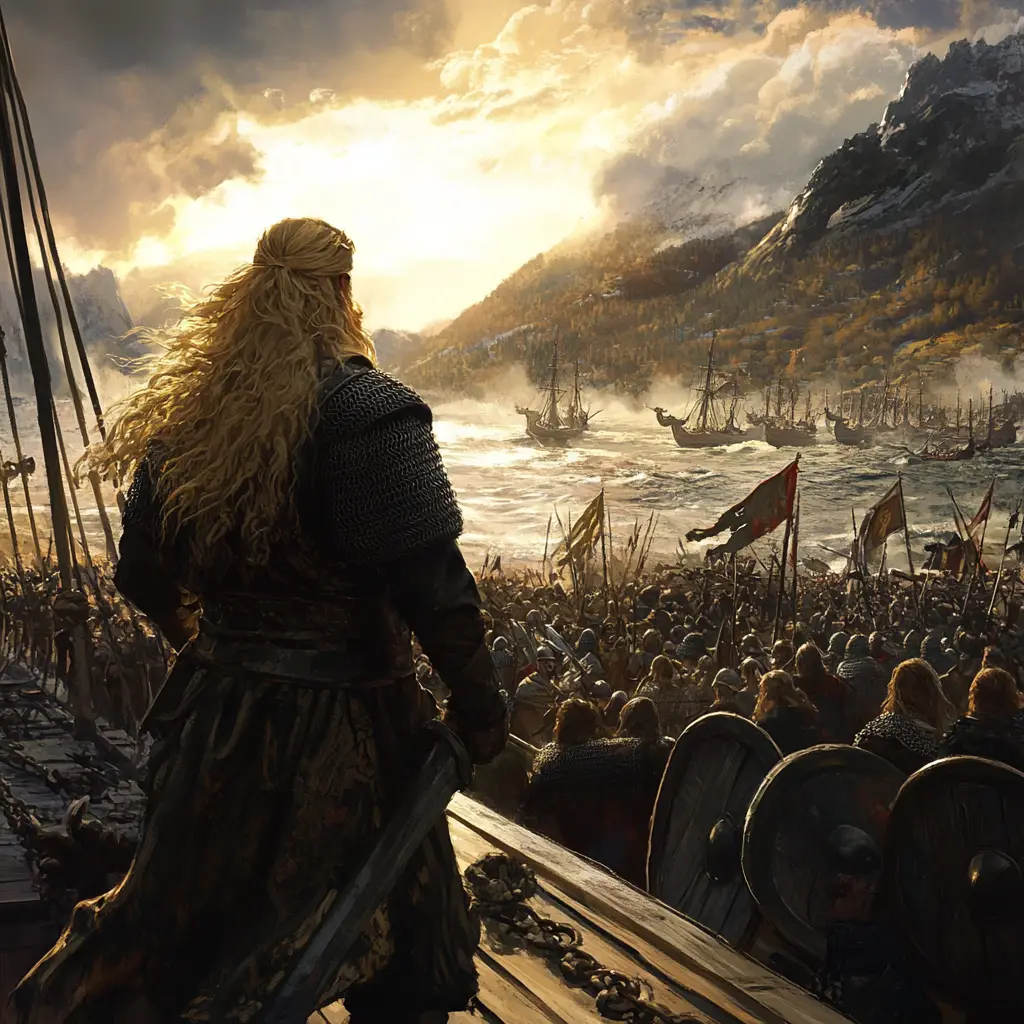Battle of Hafrsfjord (c. 872 AD)
Location: Hafrsfjord, near Stavanger, Norway
Combatants:
King Harald Fairhair’s forces (seeking to unify Norway)
Coalition of rival Norwegian chieftains (resisting unification)
Background
By the late 9th century, Norway was divided into multiple small, independent kingdoms, each ruled by its own chieftain or petty king. Harald Fairhair (Harald Hårfagre) sought to unify these territories under his rule. The Battle of Hafrsfjord was the final and decisive battle in his campaign to become the first King of a united Norway.
The Battle
The battle was a large naval conflict, with Viking longships clashing in the narrow waters of Hafrsfjord.
Harald Fairhair commanded a well-organized fleet, possibly with superior ship designs and experienced warriors.
The opposing chieftains, though powerful individually, lacked a unified strategy, leading to their eventual defeat.
After intense combat, Harald’s forces gained the upper hand, crushing the opposition and forcing surviving chieftains to flee or submit.
Outcome
Harald Fairhair won – He consolidated his rule over Norway, marking the beginning of a unified Norwegian kingdom.
Many rival chieftains were killed or exiled – Some fled to Iceland, the Faroe Islands, and other Norse settlements.
Significance
Unification of Norway – The battle solidified Harald Fairhair’s rule, making him the first King of Norway.
Viking Expansion – Defeated warriors and noble families fled, contributing to the Norse colonization of Iceland, Greenland, and beyond.
End of Small Kingdoms – The local chieftain system in Norway weakened, leading to centralized rule.
Legacy
The Battle of Hafrsfjord is considered the defining moment in Norway’s unification and is commemorated today with the Swords in Rock (Sverd i Fjell) monument in Stavanger. Harald Fairhair’s victory established a dynasty that influenced Norway’s future for generations.



